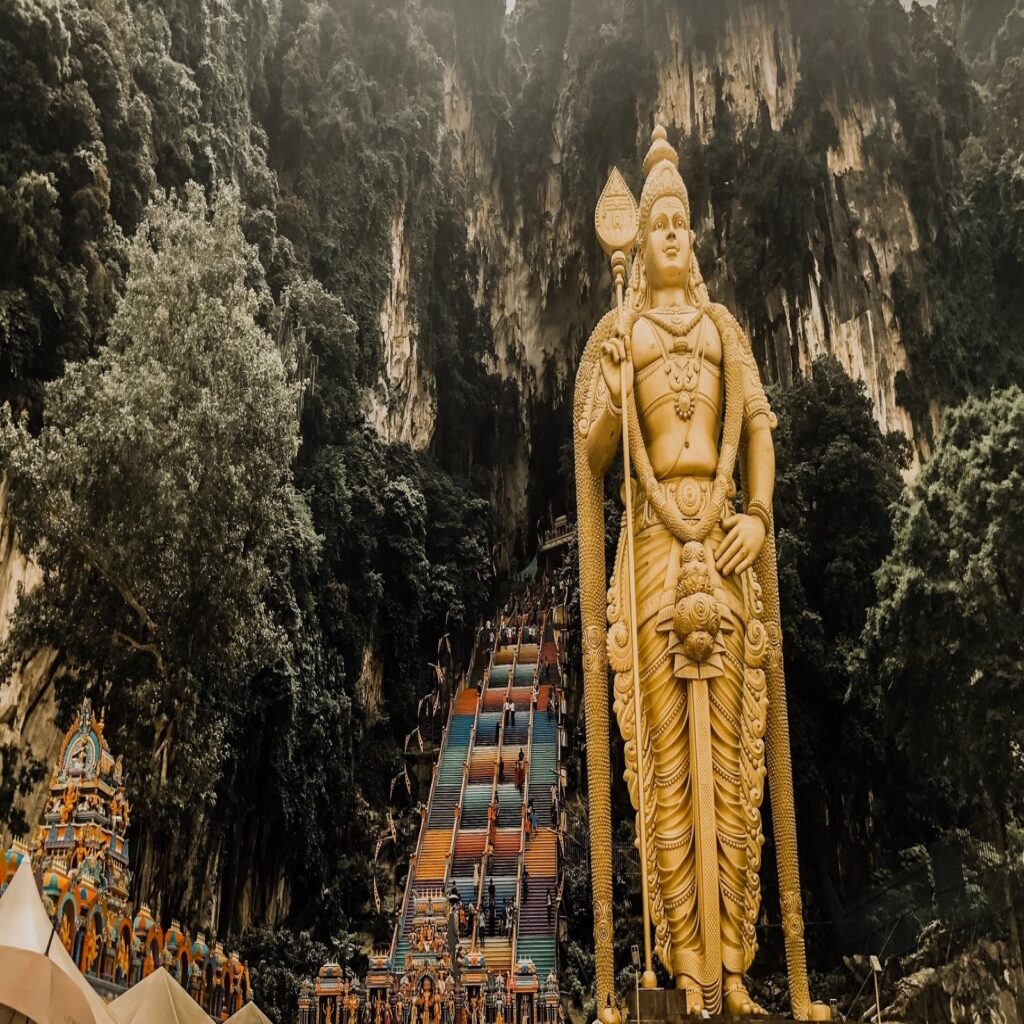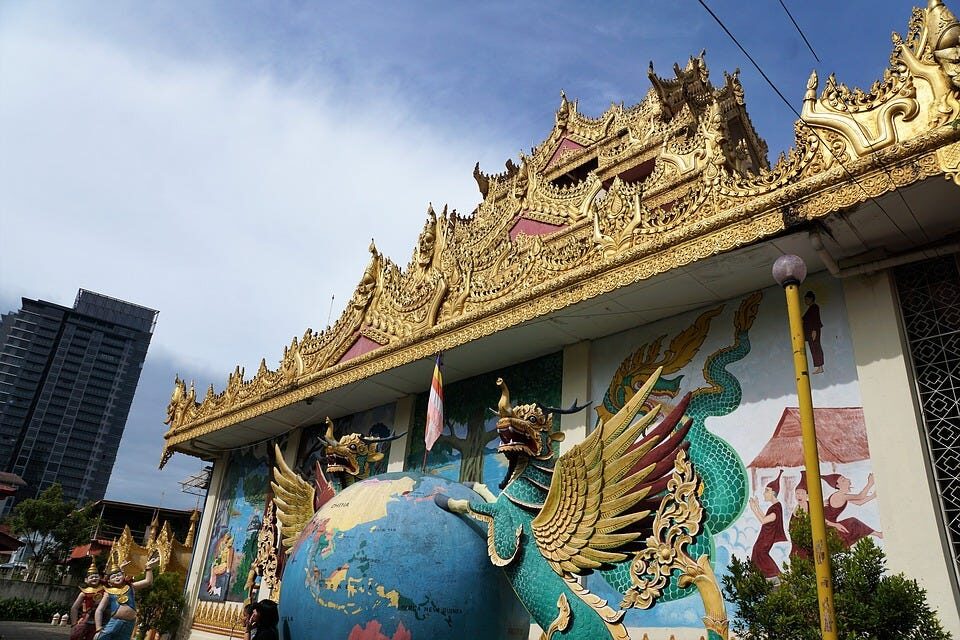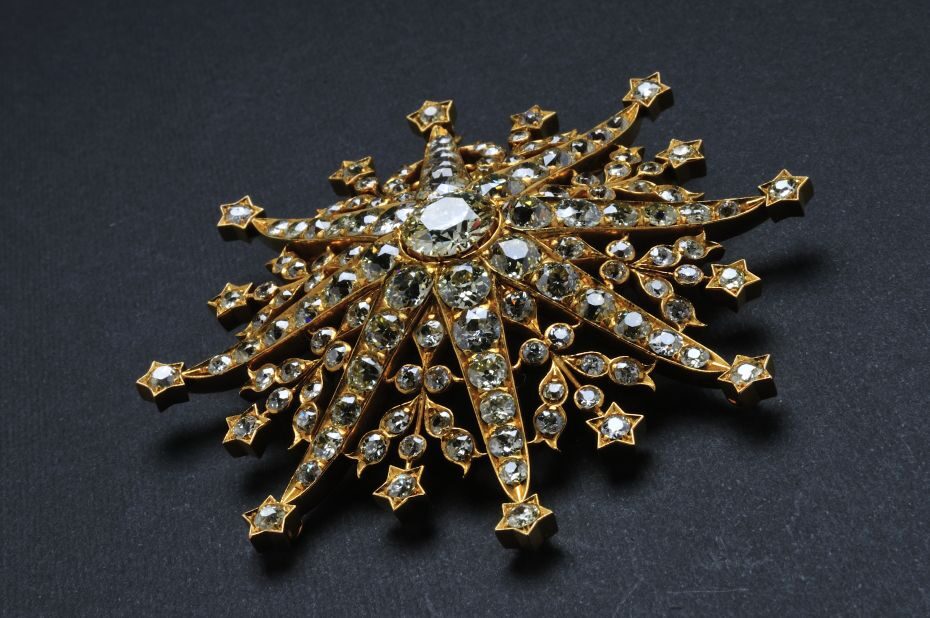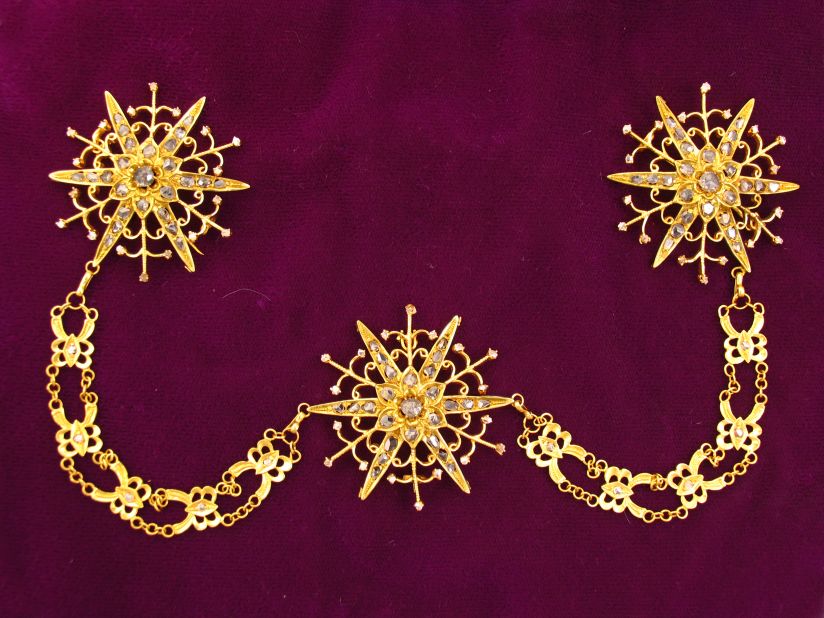Malaysia is a country rich in cultural and historical heritage, and one element that consistently shines bright throughout its history is gold. From ancient times to modern-day, gold holds a significant role in the culture, economy, and traditions of Malaysia. This precious metal is not only valued for its monetary worth but also revered for its symbolism, craftsmanship, and beauty. In this article, we will explore the multi-faceted role of gold in Malaysia’s cultural and historical heritage, delving into its significance in various aspects of Malaysian society. So, grab a cup of tea and join us in uncovering the golden tapestry of Malaysia’s past and present.

Role of Gold in Traditional Malay Customs
Gold holds a significant role in the cultural and historical heritage of Malaysia, particularly in traditional Malay customs. From wedding rituals to religious practices, gold has been revered and cherished by Malaysians for centuries. It symbolizes wealth, prosperity, royalty, and divine blessings. Let’s explore the various aspects of Malaysian culture where gold plays a vital role.
Malay Wedding Rituals
In Malay wedding customs, gold is an essential element. It is used to adorn the bride and groom and signifies their wealth and social status. When a couple gets engaged, the bride is presented with a gold engagement ring known as “cincin kahwin.” This ring serves as a symbol of commitment and signifies the groom’s ability to provide for his future wife.
During the wedding ceremony, the bride typically wears a beautiful bridal outfit complete with intricate gold jewelry, such as a gold necklace, bracelets, and earrings. The groom also wears gold accessories like a brooch or a dagger called “kris.” These gold adornments not only enhance the couple’s appearance but also serve as a symbol of their prosperous future together.
Blessings and Auspicious Occasions
Gold is considered auspicious in Malay culture and is often associated with blessings and prosperity. It is believed that wearing or possessing gold items can bring good fortune and ward off evil spirits. Therefore, gold is prominently featured in various auspicious occasions such as birth celebrations, housewarmings, and festive ceremonies.
For example, when welcoming a newborn baby into the family, gold jewelry or gold coins are often gifted as a symbol of blessing and prosperity. Similarly, when someone moves into a new home, gold ornaments are placed around the house to bring good luck and prosperity.
Decorative and Ornamental Purposes
Gold is also used for decorative and ornamental purposes in Malaysian culture. Intricately designed gold ornaments, such as figurines, vases, or decorative plates, are often displayed in homes or public spaces as a symbol of wealth and refinement. These gold decorative items not only add a touch of elegance but also reflect the deep appreciation for art and craftsmanship in Malaysian culture.
Traditional Attire and Accessories
In traditional Malay attire, gold plays a vital role in enhancing the overall regal and elegant look. Men often wear a songket, a traditional woven fabric embedded with gold threads, for special occasions like weddings or cultural events. Women, on the other hand, wear a baju kurung, a traditional Malay dress, which is often adorned with gold embroidery or embellishments.
Gold accessories also play a crucial role in completing the traditional attire. For women, this may include gold brooches, hairpins, or belts that enhance the beauty of their outfits. These gold accents not only add a touch of glamour but also signify the wearer’s social status and cultural identity.
Gold in Royal Regalia and Ceremonies
Malaysia’s royal heritage is steeped in traditions and ceremonies that prominently feature gold. From the king’s crown to the queen’s crown and various royal ceremonial objects, gold is a symbol of royalty, power, and prestige.
The King’s Crown
The king’s crown, also known as the “Tengkolok Diraja,” is a magnificent piece of regalia adorned with gold and precious gemstones. It represents the authority and sovereignty of the king. The intricate designs and meticulous craftsmanship of the crown exemplify the importance of gold in Malaysian royalty.
The Queen’s Crown
Similarly, the queen’s crown, often referred to as the “Tengkolok Permaisuri,” is a stunning piece of artistry embellished with gold and gemstones. It signifies the queen’s position and adds a touch of elegance to royal occasions. The crown’s design and details reflect the beauty and grace associated with the queen.
Royal Ceremonial Objects
Gold is also prominently featured in various royal ceremonial objects used during significant events or rituals. These objects, such as royal scepters, ceremonial swords, and gold-plated vessels, are meticulously crafted, often using gold and other precious metals. They are symbolic representations of the monarchy’s grandeur and play an essential role in upholding the royal traditions and customs.
Palace and Throne Room Decorations
The grandeur and opulence of Malaysia’s royal palaces are enhanced by the presence of gold decorations. From gold-plated furniture to intricate gold motifs on walls and ceilings, gold adds a sense of luxury and regality to the palace interiors. The throne room, where important ceremonies and royal functions take place, often features gold accents, symbolizing the royal authority and magnificence.

Religious Significance and Gold
Gold holds immense religious significance in Malaysia, particularly in Islamic practices. The country’s dominant religion, Islam, views gold as a sacred metal, associated with purity, prosperity, and divine blessings. It is utilized in religious structures, art, calligraphy, and contributions to charitable endeavors.
Gold in Islamic Practices
In Islamic rituals and practices, gold plays a significant role. From gold jewelry worn by worshippers during prayers to gold-trimmed Quranic manuscripts, gold is considered a symbol of highest esteem in the faith. Muslims often wear gold rings, bracelets, or chains as a reflection of their devotion and faith.
Mosques and Religious Architecture
Gold is often incorporated into the design and decoration of mosques and other Islamic religious structures. Islamic architecture in Malaysia frequently features domes or minarets adorned with gold leaf or gold-colored accents. The shimmering gold surfaces emit a sense of reverence and awe, creating a sacred atmosphere within these religious spaces.
Islamic Art and Calligraphy
Gold is extensively used in Islamic art and calligraphy, serving as a medium to depict verses from the Quran or other religious texts. Skilled artisans create intricate calligraphic designs using gold ink or gold leaf, enhancing the beauty and importance of these religious writings. Gold’s presence in Islamic art showcases the reverence and respect for the religious teachings and the beauty of the written word.
Waqf Contributions
Waqf, the Islamic practice of endowment, often involves the donation of gold or wealth in the form of gold to support charitable causes. Individuals or institutions may contribute gold as an act of piety and altruism, ensuring that their wealth benefits the community. The sentiment behind waqf contributions reflects the significance of gold in Islamic culture and the act of giving back to society.
Historical Significance of Gold
Gold has played a crucial role in Malaysia’s history, particularly during the era of Malay kingdoms, trade and commerce, colonial influences, and the country’s struggle for independence.
Malay Kingdoms and Gold
During the period of Malay kingdoms, gold symbolized power, wealth, and influence. Rulers and nobles adorned themselves with gold jewelry and accessories, showcasing their status and authority. Gold was also used as a gift or tribute to forge alliances and maintain diplomatic relations with neighboring kingdoms.
Trade and Commerce with Gold
Gold has historically been a valuable commodity for trade and commerce in Malaysia. The region’s strategic location along major trade routes facilitated the exchange of gold with merchants from various parts of the world. Gold became a medium of exchange and a store of value, contributing to Malaysia’s economic growth and prosperity.
Colonial Era Influences
The arrival of colonial powers in Malaysia brought significant changes to the role of gold. The British, for example, introduced their currency system, which gradually replaced the use of gold as a medium of exchange. However, gold still retained its cultural significance among Malaysians, even as the colonial influence shifted the economic landscape.
Gold in Malaysian Independence
Gold played a symbolic role during Malaysia’s struggle for independence from colonial rule. It was associated with the nation’s collective aspiration for freedom and sovereignty. Gold artifacts and jewelry were often used as symbols of unity and resistance against foreign domination, serving as a reminder of the rich cultural heritage that Malaysians were fighting to protect.

Gold as an Investment in Malaysia
Beyond its cultural and historical significance, gold has also emerged as an important investment avenue in Malaysia. Its unique properties, such as being a tangible asset and a hedge against inflation, have made it attractive to investors looking to diversify their portfolios.
Gold Prices and Market Trends
Investing in gold involves closely monitoring its prices and market trends. Factors such as global economic conditions, geopolitical events, and supply and demand dynamics influence the value of gold. Investors track these trends to make informed decisions regarding their gold investments.
Implications for Economic Growth
gold investments can have implications for Malaysia’s economic growth. The country’s gold mining industry, for example, contributes to job creation and revenue generation. Additionally, gold investments can have a stabilizing effect on the economy, particularly during times of uncertainty, as gold prices often rise during market downturns.
Government Policies and Regulations
The Malaysian government plays a significant role in shaping the gold investment landscape through policies and regulations. Authorities establish rules governing gold trading, import and export, and licensing requirements for gold dealers. These regulations aim to protect investors, ensure transparency, and promote a healthy investment environment.
Gold Exchange and Trading
Investors in Malaysia can participate in gold trading through various avenues, including gold exchanges or trading platforms. These platforms provide a convenient and accessible way for investors to buy, sell, or trade gold. Gold exchange-traded funds (ETFs) have also gained popularity, allowing investors to gain exposure to gold without directly owning physical gold.
Gold Mining in Malaysia
Malaysia has a long history of gold mining, with significant gold deposits found throughout the country. However, the environmental and social impact of mining has raised concerns, leading to the adoption of more sustainable practices in recent years.
Historical Gold Mining Sites
Historically, gold mining sites in Malaysia were concentrated in areas such as Pahang, Kelantan, and Terengganu. These regions were known for their rich gold deposits and attracted miners in search of fortune. The remnants of old mining sites serve as a reminder of Malaysia’s gold mining heritage.
Effects on Environment and Communities
Gold mining, like any other mining activity, can have adverse effects on the environment and local communities. Mining operations may lead to deforestation, land degradation, and pollution of water bodies. Responsible mining practices are essential to mitigate these impacts and protect the environment and the well-being of affected communities.
Current State of Gold Mining
In recent years, Malaysia has shifted its focus towards sustainable mining practices. This includes the implementation of stricter regulations, rehabilitation of mining sites, and promoting sustainable mining technologies. The government’s efforts aim to balance the economic benefits of gold mining with the need to protect the environment and local communities.
Sustainable Mining Practices
Sustainable mining practices involve minimizing the environmental footprint of mining activities and prioritizing the well-being of local communities. This includes implementing proper waste management systems, reforestation plans, and engaging with local stakeholders to ensure transparency and social inclusivity. Adhering to these practices is crucial for the long-term sustainability of the gold mining industry in Malaysia.

Preservation and Promotion of Gold Heritage
Recognizing the cultural and historical significance of gold, Malaysia has taken several steps to preserve and promote its gold heritage. Museums, government initiatives, cultural festivals, and education programs all contribute to protecting and showcasing the country’s rich gold traditions.
Museums and Exhibitions
Malaysia is home to museums and exhibitions dedicated to preserving its gold heritage. These institutions showcase a wide range of exhibits, including historical gold artifacts, traditional gold jewelry, and displays on gold mining history. By providing a platform for public engagement and learning, these museums play a crucial role in preserving Malaysia’s gold heritage.
Government Initiatives
The Malaysian government has implemented various initiatives to promote the country’s gold heritage. This includes funding research and documentation projects, organizing cultural events, and supporting craftsmen and artisans involved in gold-related crafts. These initiatives aim to raise awareness about Malaysia’s gold traditions and encourage cultural appreciation.
Cultural Festivals and Events
Cultural festivals and events provide opportunities to celebrate Malaysia’s gold heritage. Events such as the Malay Cultural Festival and the National Craft Day often feature exhibitions, demonstrations, and performances that highlight the cultural significance of gold. These festivals serve as a platform for artisans, craftsmen, and performers to showcase their skills and promote the importance of gold in Malaysian culture.
Education and Awareness Programs
Educational programs play a vital role in fostering an appreciation for Malaysia’s gold heritage. Schools, universities, and cultural organizations offer classes and workshops on traditional goldsmithing techniques, cultural significance of gold, and historical aspects of gold in Malaysia. Such programs ensure that future generations understand and value the country’s gold heritage.
Goldsmithing and Craftsmanship
The art of goldsmithing holds a special place in Malaysia’s cultural fabric. Skilled artisans, known as goldsmiths, preserve traditional techniques and create exquisite gold jewelry and handicrafts that reflect the country’s rich heritage.
Traditional Goldsmithing Techniques
Goldsmithing in Malaysia involves intricate craftsmanship and the use of traditional techniques passed down through generations. Artisans meticulously shape gold using hand tools and delicate processes like filigree, engraving, and etching. These techniques require patience, skill, and attention to detail to create stunning and unique gold pieces.
Artisanal Gold Craftsmen
Artisanal gold craftsmen play a crucial role in preserving Malaysia’s gold heritage. These skilled craftsmen contribute to the country’s handicraft industry by creating intricate gold jewelry and decorative items. They often combine traditional techniques with innovative designs to cater to modern tastes while staying true to the aesthetics of Malaysian culture.
Role in Malaysian Handicraft Industry
Goldsmithing is a significant part of Malaysia’s handicraft industry. Gold artisans contribute to the creation of unique and culturally significant products, supporting the local economy and promoting tourism. The handmade gold jewelry and crafts showcase the country’s artistic talent and serve as souvenirs or heirlooms for both locals and visitors.
Contemporary Gold Design
While traditional goldsmithing techniques retain their importance, contemporary gold design has also emerged in Malaysia. Local designers combine modern aesthetics with traditional motifs and techniques to create innovative gold jewelry and accessories. This contemporary approach ensures that gold continues to remain relevant and appeals to younger generations.

Symbolism of Gold in Malaysian Culture
Gold holds deep symbolism in Malaysian culture, reflecting values, beliefs, and societal structures. It represents wealth, prosperity, royalty, and divine blessings, and is associated with various aspects of life and identity.
Wealth and Prosperity
Gold is a symbol of wealth and prosperity in Malaysian culture. Possessing or wearing gold jewelry signifies prosperity and abundance. It is often gifted or acquired during important life events, serving as a marker of financial success and social standing.
Royalty and Nobility
Throughout Malaysia’s history, gold has been closely associated with royalty and nobility. The use of gold in regalia, crowns, and ceremonial objects symbolizes the royal lineage and authority. Gold accents in traditional attire and accessories also reflect the aristocratic status and nobility of individuals.
Status and Social Hierarchy
Gold plays a role in defining social hierarchy and status within Malaysian society. Those who possess or wear gold items are often regarded with respect and admiration. Gold serves as a visible marker of social standing and can indicate a person’s success, influence, or position within the community.
Divine and Sacred Representations
Gold holds religious and sacred significance in Malaysian culture, particularly in the context of Islamic practices. It is associated with spiritual purity and blessings. The presence of gold in mosques, religious art, and calligraphy represents the divine connection and holiness within these spaces.
Challenges and Future Outlook
While gold continues to hold immense cultural and historical significance in Malaysia, several challenges and considerations shape its role in the future.
Global Market Volatility
The volatility of the global gold market poses challenges for gold investors and traders. Fluctuations in gold prices can have implications for investment returns and financial stability. Staying informed about market trends and adopting risk management strategies is essential to navigate these uncertainties.
Sustainable Sourcing and Ethics
Promoting sustainable sourcing and ethical practices in gold mining is crucial for minimizing environmental impact and protecting local communities. Striking a balance between economic development and responsible mining practices is necessary to preserve Malaysia’s natural resources and its gold mining heritage.
Preserving Traditional Goldsmithing
Preserving traditional goldsmithing techniques is essential for passing on Malaysia’s cultural heritage to future generations. Supporting artisans, providing training programs, and creating opportunities for apprenticeships can ensure the continuity of these skills within the local community.
Encouraging Cultural Appreciation
Encouraging cultural appreciation and awareness of Malaysia’s gold heritage is vital for its preservation. Education programs, community initiatives, and collaborations between artists, craftsmen, and cultural organizations can help raise awareness and foster a deeper appreciation for the cultural significance of gold.
In conclusion, gold plays a multifaceted role in Malaysia’s cultural and historical heritage. From traditional customs to royal regalia, religious practices, and investment opportunities, gold holds immense significance. Its symbolism of wealth, prosperity, royalty, and divine blessings permeates Malaysian culture, reflecting values, beliefs, and aspirations. While facing challenges and evolving in a changing world, the preservation and promotion of Malaysia’s gold heritage continue to captivate and inspire generations to come.








